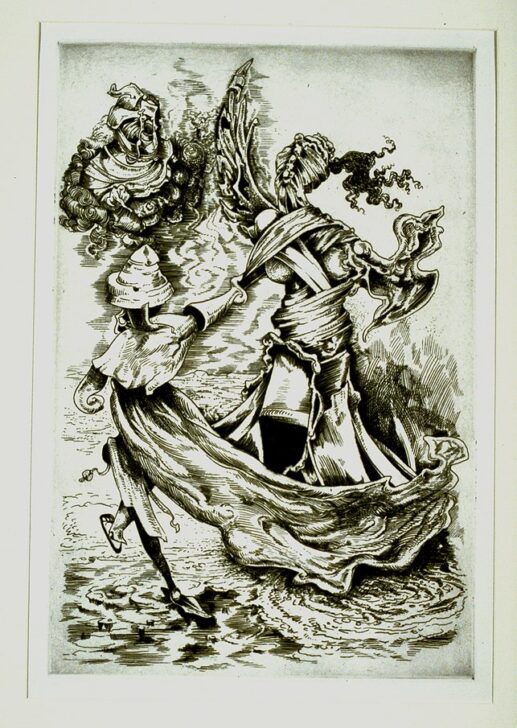Oedipus at Colonus, Plate 6 from ‘The Myth of Oedipus’
Kurt Seligmann

Description
Seligmann was the first of the Surrealists to leave Europe at the outbreak of the Second World War. During a visit to the Museum of Modern Art in New York, Seligmann struck up a conversation with art historian Meyer Schapiro. The two became good friends and collaborated on this reinterpretation of the Greek myth of Oedipus, Seligmann producing six large etchings to illustrate the tragic story. Exposed on a hillside by his father, the King of Thebes, Oedipus was rescued and raised in obscurity. Eventually the prophecy was fulfilled: Oedipus unknowingly slew his father, Laius, and, upon marrying his mother, became King of Thebes. Once the truth was revealed, his mother, Iocasta, hanged herself. Oedipus in despair blinded himself and was banished to Colonus by his sons.
Seligmann’s etchings convey a grandeur befitting one of the best-known myths of ancient Greece, and also one of the archetypal stories of modern psychoanalysis. Such deeply embedded drives of the collective unconscious were favorite topics of the Surrealists; the primal force of such stories were seen, along with dreams, as avenues into the subconscious and irrational dimensions of the imagination. Seligmann uses plate tone, the faint film of ink at the outer edges of the compositions, to contribute to the dreamlike depiction of space, and also to provide tonal nuances within the figures.
Label copy from exhibition "Dreamscapes: The Surrealist Impulse," August 22 - October 25, 1998
Subject Matter:
Usage Rights:
If you are interested in using an image for a publication, please visit https://umma.umich.edu/request-image/ for more information and to fill out the online Image Rights and Reproductions Request Form.